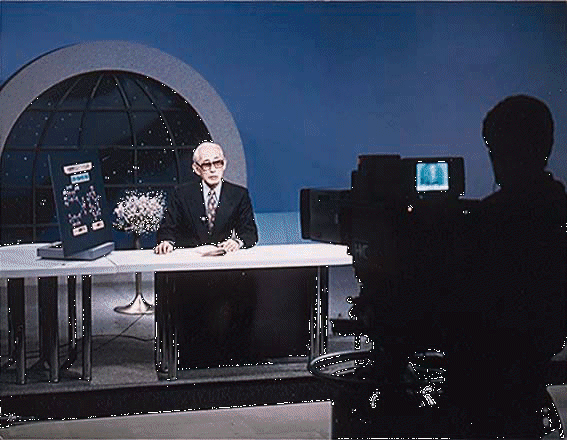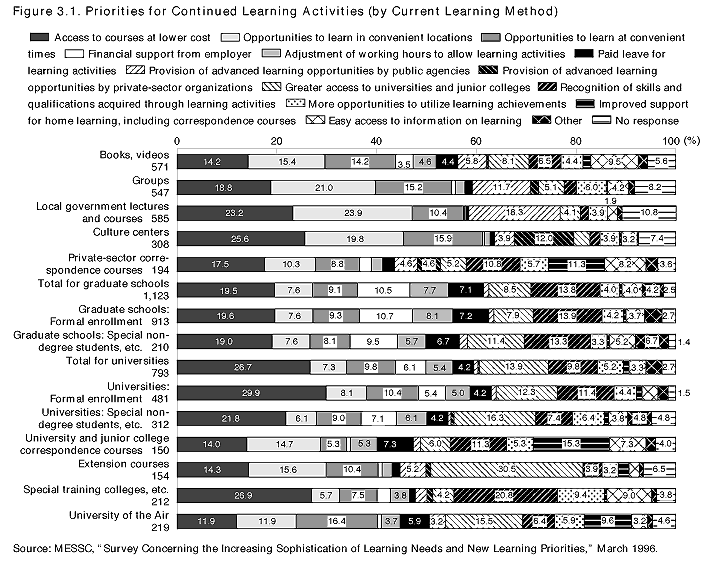| Home > Policy > White Paper, Notice, Announcement > White Paper > JAPANESE GOVERNMENT POLICIES IN EDUCATION, SCIENCE, SPORTS AND CULTURE 1996 > Priorities and Prospects for a Lifelong Learning Society Chapter 3 | ||

As noted in chapter 2, there has been a steady increase in the number of people involved in learning activities throughout their lives. When respondents to the 1992 "Public Opinion Survey on Lifelong Learning" were asked their wishes concerning future learning activities, 65.9% said that they wanted to engage in learning activities, a considerably larger proportion than the 47.6% already involved in such activities. Moreover, once people commence structured, ongoing learning activities, they tend to continue those activities and work toward advancement. These factors point to continued growth in the learning population.
The growth of the learning population, however, is not sufficient in itself to ensure the creation of a society in which people are free to select learning opportunities at any time in their lives and in which they will receive due recognition of their learning achievements. It is generally accepted that such a society will not emerge naturally from the present learning environment but will require the fulfillment of a number of requirements, including organized efforts by various institutions and organizations involved in learning activities as well as improvement of the learning environment through such means as the enhancement of education leave and scholarship systems.
Respondents to the 1996 MESSC survey were asked to state their conditions for ongoing learning. The most common responses were "access to courses at lower cost," "opportunities to learn in convenient locations," and "opportunities to learn at convenient times." Among people enrolled in graduate schools there was also a strong emphasis on "financial support from employer" and "recognition of skills and qualifications acquired through learning activities." "Greater access to universities and junior colleges" was a priority for people enrolled in universities, taking extension courses, and learning through the University of the Air. These results indicate that establishing conditions for continued learning requires measures carefully targeted to the type of learning ( Figure 3.1 ).

The decision to engage in learning activities should be voluntary. Public agencies working to give the public a free choice of learning opportunities should therefore focus on creating an environment that enables people to undertake learning activities through their own initiative and on encouraging those activities.
This chapter discusses a number of problems and offers solutions based on this perspective. Section 1 provides an overview of responses to the diversification of learning needs, while section 2 focuses on the improvement of structured, continuous systems to provide advanced learning opportunities, which is likely to become an increasingly important priority in the future. In order to create a lifelong learning society, individuals need to develop the ability to survive in a rapidly changing social environment. Section 3 examines priorities based on the viewpoint that people should be provided with better opportunities to acquire these skills during childhood and adolescence. The question of how people can utilize their learning achievements is closely linked to the issue of evaluation, which is one of the factors that defines a lifelong learning society. Section 4 considers this important question, which also has a bearing on the promotion of learning itself.
| Back to Top | MEXT HOME |